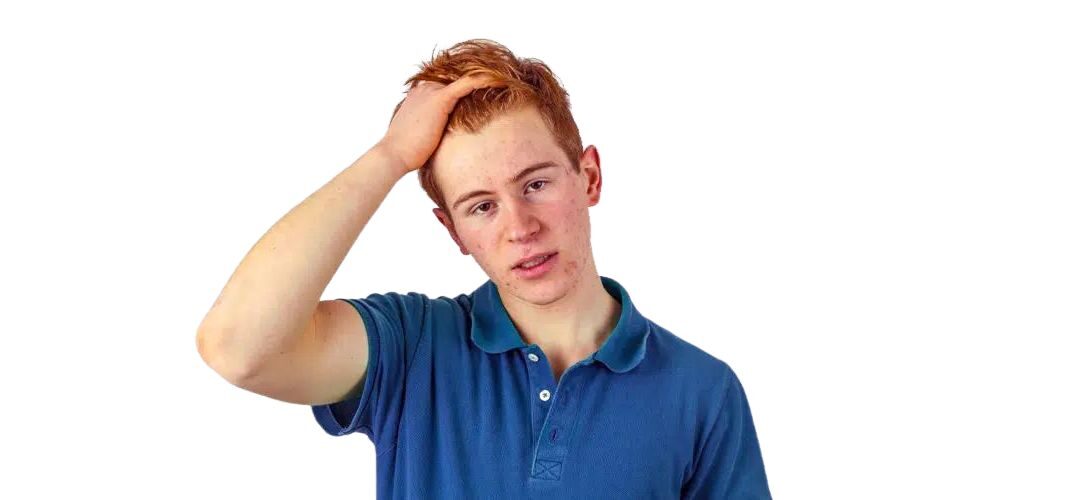Breakouts, blemishes pimples, zits; whatever you choose to call them, the truth is that they’re bound to pop up at some point in your life. At the best of times, they’re a frustrating inconvenience, lasting for a day or two. At the worst of times, they can send self-confidence spiralling as they grace your face for a week and leave permanent scarring. The good news is that acne is treatable. But, before you treat acne, you need to figure out what type of acne you’re experiencing. Let’s get into it.
Firstly, what causes acne?
Generally speaking, acne is the by-product of pores on your skin clogging with oil, dead skin, or bacteria. It’s a skin condition that typically shows up on your face, chest, upper back and shoulders because these are the areas of the body with the most sebaceous glands. And to set the record straight, eating chocolate or pizza has little to no effect on your chances of developing acne (eat away!). There’s other factors which you can read about here.
So, what are the different types of acne and how do you treat them?
There are six types of acne to know about; whiteheads, blackheads, papules, pustules, nodules and cysts.
What are whiteheads and how do you treat them?
Whiteheads happen when the pores in your skin are clogged the entire way through, causing a small white bump to appear on top of the skin. It may be super tempting to squeeze or pop whiteheads, but this should be avoided if you want to prevent acne scarring.
Treat whiteheads with over-the-counter treatments featuring ingredients of sulphur, salicylic acid or benzoyl peroxide. These products will help to remove dead skin cells and excel oil. Topical retinoids with vitamin A can also help to clear non-inflammatory acne.
What are blackheads and how do you treat them?
Similarly to whiteheads, blackheads have a clogged length of pore, but with an open head. The open-headed feature makes the blemish appear black on the skin’s surface. Again, refrain from squeezing blackheads as this can cause acne scarring.
Treatment options for blackheads are the same for whiteheads.
What are papules and how do you treat them?
Not as familiar in name as whiteheads and blackheads, papules are what we call those little red bumps that appear when excess oil or dead skin cells clog a pore and mix with bacteria on the skin, causing an inflamed lesion. Papules don’t contain pus and are not to be confused with pustules – we’ll get to those soon.
The best treatment for acne in papule form is a product with antibacterial properties, like over-the-counter treatment, benzoyl peroxide. If your skin isn’t getting much relief from papules, visit a dermatologist who may prescribe a topical retinoid or antibiotics to help combat the inflammation.
What are pustules and how do you treat them?
If you’ve ever had a small, bulging bump with a white centre and inflamed outer lining, it was most likely a pustule. Pus-filled by name and nature, pustules are the result of an infected blocked pore with the addition of pus. They’re a nasty form of acne that commonly form in clusters on the face, back or chest. Whatever you do, do not pop a pustule – this can cause the bacteria to spread and breakouts to multiply.
Treat pustules with the same over-the-counter products as papules. Alternatively opt for antibiotics via a prescription from your trusted doctor.
What are nodules and how do you treat them?
Nodular acne occurs when there’s an infection deep within the pore caused by a type of bacteria called Cutibacterium acnes (aka C. acnes). Nodules show up as flesh-coloured or red bumps.
When treating nodular acne, it’s important to remember that the issue lies beneath the skin and therefore topical treatments bear no benefit. A visit to a dermatologist will be the best method of attack when experiencing nodular acne.
What are cysts and how do you treat them?
The most severe member of the acne gang, cystic acne is caused by an infection deep within the skin. Acne cysts are large, red, inflamed, pus-filled and painful.
Since cystic acne lies so deep within the skin, it’s the most stubborn to treat. We suggest seeing a dermatologist for personalised treatment options that may include one or several topical and oral medications.
This guide is designed to be informative and educational. It is not intended to provide specific medical advice or replace advice from your medical practitioner.
